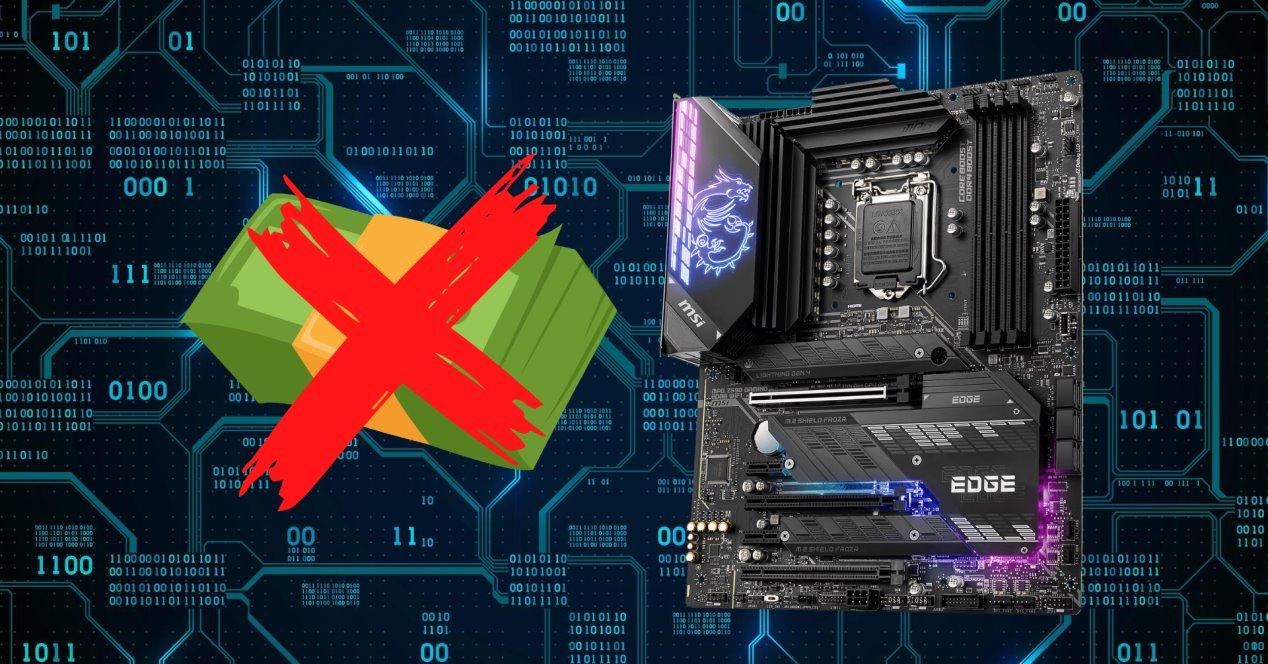Often we pay more for things we won’t need at all. The component that has the most unnecessary elements is the motherboard, which incorporates a lot of things that are worthless. We’ll see it all things that make your motherboard cost a lot more unnecessarily.
The truth is that it is very difficult (if not impossible) for you to find a motherboard without all this “bullshit”. It is established that motherboards must have these elements, which are merely cosmetic. We actually pay for a lot of things that we don’t need but are there, like RGB lighting, for example.
Nonsense who wears a motherboard
It is an important component, as it is used to communicate CPU, graphics card, storage, peripherals, etc. The problem is that we’ve gone from complete and functional motherboards to expensive motherboards with lots of unnecessary stuff. You pay for all those unnecessary things, even though you may never use them.
Some of the most unnecessary parts of the motherboard are:
- RGB lighting: It’s become fashionable to turn your PC into what would be a typical road bar with lots of little lights. They do absolutely nothing except increase the consumption of the system. Also, in many cases, they end up being disabled because they end up being very annoying.
- Wireless: We can see how mid-range and high-end motherboards are starting to offer this type of internet connection. The truth is that it doesn’t make the slightest sense to already have the conventional Ethernet ports
- Miscellaneous M.2 for SSD: The truth is ridiculous that a motherboard has more than one slot for M.2 SSD hard drives. Few users will install two of these storage drives, it makes no sense. If we want more capacity, there are SATA SSDs or HDDs for it, which offer more capacity and are cheaper
- SATA Ports: It doesn’t make much sense to have more than 4 SATA ports on our motherboard. With the arrival of the M.2, these were left for secondary storage units. Plus, no one is installing DVD players on their systems anymore, so why do we want more?
- RAM memory shield: It makes a lot of sense to use the shield or booster on the graphics card PCIe socket, but what about RAM? Well, the truth is, it doesn’t make any sense, it’s just cosmetic and doesn’t do any work. RAM memory has practically no weight and it is impossible for the motherboard to bend due to this component. Also, most users won’t swap input and output RAM, so it’s not justified.
Other elements that make it more expensive
We’ve seen the main things you don’t need on a motherboard, but there are more. We’re going to see all the extra stuff that doesn’t add value to that component, but subtracts it. These are:
- Sound chart: That the sound card is integrated into the motherboard is great, but it contains unnecessary elements. Few users will use the 5.1 or 7.1 setups, let alone the digital audio output. It’s a bit absurd to add all these additional elements on all motherboards, why be wrong
- Two Ethernet ports: Some motherboards have two ethernet ports, which doesn’t make sense. Very few users will benefit from it, so including it adds nothing to a motherboard
- video connectors: It is good that the motherboard includes a video connector, in case we want to take advantage of integrated graphics. If we want, we can think of HDMI as the standard video connector that should be on the motherboard. But why do we want HDMI, DisplayPort and DVI (or VGA)? It does not make sense so many video connector
- Two or more PCIe x16 slots: NVIDIA SLI and AMD CrossFire configurations are now discontinued. Currently, installing two graphics cards doesn’t make much sense for gaming (if it ever did). So having two or more PCIe x16 slots for graphics cards doesn’t make sense. We may support a second PCIe x16 slot for some uses, but they’re so rare it doesn’t make sense
We want to know your opinion on this and if there are other elements that you consider superfluous in current motherboards. Leave us your opinion on this subject in comments.








